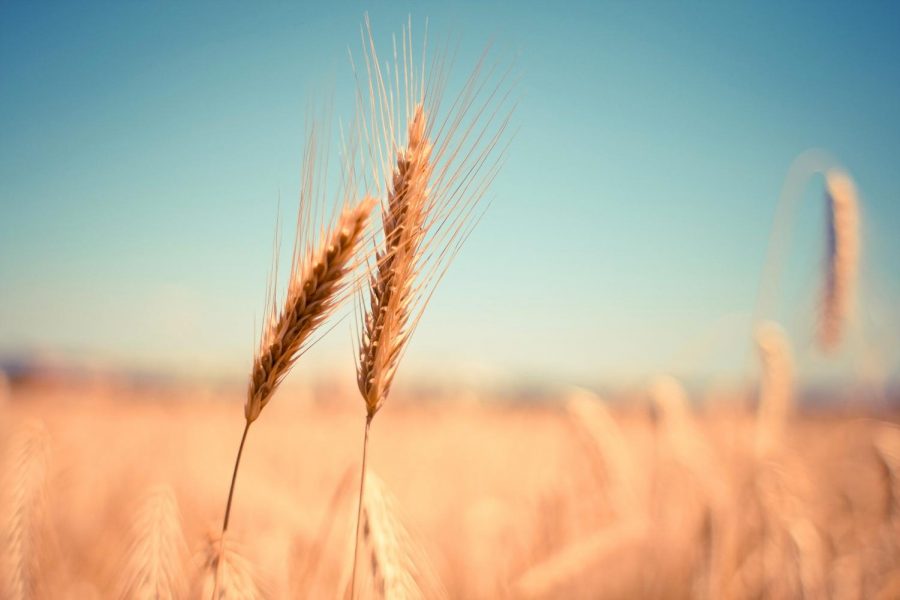Research looks for solution to wheat, barley disease
Palouse’s cool climate, moisture from coast create ideal conditions
Stripe rust disease is a fungus that affects wheat and barley. In Whitman County, farmers produce millions of bushels of wheat annually and weather conditions provide the perfect climate for disease to flourish.
October 10, 2018
Few know that rust does not only develop on metals, but also develops on plants in the form of disease. Stripe rust affects wheat and barley crops causing serious financial loss for farmers.
The disease is especially a problem for local farmers, who produce mass amounts of wheat used and exported from the U.S.
The Pacific Northwest also has the ideal climate for stripe rust because the fungus prefers cooler weather and moisture in the air.
With moisture coming inland from the coasts of Washington and cold but not freezing winters on the eastern side of the state, stripe rust thrives on the chilly nights with dew most commonly observed in the cooler months, said Kent Evans, a top researcher employed by the U.S. Department of Agriculture.
“We’re all wondering how climate change will affect the host and the pathogen,” he said.
The disease also affects farmers in other parts of the world as well, said Xianming Chen, the head researcher in plant pathology research in the U.S. Department of Agriculture and WSU.
“Stripe rust is the most important disease in wheat throughout the country and worldwide,” he said.
Stripe rust is a fungus that relies on a plant host. The fungus utilizes the water and nutrients in the plant to grow on and into the plant’s leaves, ultimately dehydrating the plant while robbing it of food reserves. When spores appear on the leaf of a plant, the leaf becomes yellow. This disease affects wheat farmers everywhere, from cereal wheat farmers in Whitman County to pasta wheat farmers in Italy.
What makes stripe rust a difficult disease to combat is its ability to change and adapt. The researchers working with Chen focus on tracking the disease and its changes to better prepare farmers for the next year.
“The Center[s] for Disease Control monitors the influenza virus in people throughout the year, and we do the same for stripe rust on wheat because the fungus is always changing,” Evans said.
Susceptible breeds of wheat can suffer a 40 percent or more loss of crop yield, which can be a devastating financial blow for farmers, Chen said. Not only do farmers lose their profit when facing diseased wheat, they also lose physical and financial resources put into growing plants that became infected.
Chen said he encourages farmers to protect their fields against the fungus by planting breeds of wheat that are less susceptible to the disease or using fungicides if possible.
“New chemicals are more effective, but also more expensive,” Chen said.
Fungicides are chemicals used to prevent the growth and spread of fungal diseases such as stripe rust. Chen said fungicides are an extra cost to farmers and the distribution process of chemicals can be damaging to the wheat fields causing further loss of profits.
“We give this information to the breeders and the growers,” said Meinan Wang, one of Chen’s research associates at WSU.
Breeders take the research and information provided by Chen and his team to make new breeds of wheat that may be more resistant to stripe rust.
Chen said breeders are working toward creating a wheat that is resistant to the disease, resulting in a higher yield of the crop while maintaining the quality of the grain.
“We can check the wheat fields very easily here,” Chen said. “We just drive out and it’s here.”
Chen said he appreciates the proximity to the production fields on the Palouse while he is working on his research.
A number of factors could influence the growth of stripe rust from year-to-year; however, Evans suggested a factor of interest to these researchers in the future. The ability of stripe rust to adapt means the disease needs constant monitoring.
This research is meant to continue to help reduce occurrences of the disease and destruction caused by stripe rust all over the world.









